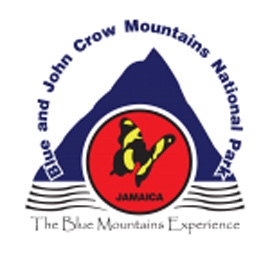Blue and John Crow Mountains National Park Portland Parish, Jamaica
The Jamaica Conservation and Development Trust is a non-governmental organization and registered charity which manages the Blue and John Crow Mountains National Park—the ancestral home of the Windward Maroons, who used their knowledge of its natural heritage to establish their culture and traditions and win their sovereignty from the English in 1739.
The main recreation and interpretive center of the Blue and John Crow Mountains National Park is located at Holywell, about one-hour's drive from Kingston. There are several trails, picnic grounds, and cabins in addition to a Visitor Center, with a number of exhibits about the natural and cultural heritage of the area.
Tours of the following places can be arranged to visit Windward Maroon communities:
- Charles Town—Maroon Museum and Asafu Yard—with a significant display of exhibits and artifacts in addition to drumming and dancing. Trail tours, e.g. Sambo Hill Trail, are also available.
- Moore Town—See the national monument to Nanny, Queen of the Maroons—and Jamaica's only female National Hero and walk to Nanny Falls to see an important battle site now great for recreation.
- Cunha Cunha Pass Trail—Hike one of the Maroon heritage trails passing sites such as Three Finger Jack Spring and then stay overnight at Ambassabeth with the Bowden Pen Farmers Association.
- Scot's Hall—Visit the Maroon community said to have been the "hospital" during the Great Maroon War—to learn about medicinal herbs along the numerous trails.
Historical Timeline
1500-1600 Enslaved Africans brought by the Spanish escaped to the mountains, taking refuge with the Taino who had sacred sites deep in the interior of the island. This group was called "Cimarrons" or "fugitives living in the mountain-tops" by the Spanish and later anglicized to "Maroons."
1600-1700 By 1640 a group had established their territory in the Blue and John Crow Mountains, in the east of the island—the Windward Maroons. The English captured Jamaica from Spain in 1655, and many of the enslaved Africans of the Spanish escaped into the mountains. The harshness of the English system of slavery with its focus on sugar-cane plantations resulted in further growth of the Maroon community.
1700-1800 By 1720 the English were encouraging white settlers to establish plantations in the east of the island, however, they found these lands were already occupied by the Maroons—with large farms and numerous towns and their capital at Great Negro Town, eventually renamed Nanny Town. The English insistence on settling these lands led to the outbreak of the Great Maroon War from about 1725. The war was at its height between 1728—1734 with the Windward Maroons under their spiritual and military leader, Nanny, using their knowledge of the steep terrain, lush forests, cascading waterfalls, springs and streams, diversity of flora and fauna to wage a successful guerilla war. The English eventually sued for and were granted peace with the signing of the Peace Treaty in 1739. This granted the Maroons sovereignty over their territory. Eventually, after signing of the Peace Treaty, the Maroons moved from the steep mountains to live in the Rio Grande and Buff Bay Valleys.
"Such as those who are unacquainted with that island will be surprised when they are told that all the regular troops could not have conquered the wild Negroes by force of arms. And if Mr. Trelawney (the Governor of Jamaica) had not wisely given them what they had contended for—liberty, they would in all probability have been as of this day, masters of the whole country." (Philip Thicknesse, 1788)
1800-1900 The Maroon presence on the northern slopes of the Blue Mountains and the John Crow Mountains resulted in these mountains having good forest cover, with little impact by people. On the southern slopes, closer to Kingston, some of the forest was cleared for coffee plantations until the colonial government began to protect these lands for watershed purposes from as early as 1889.
1900-present The Blue and John Crow Mountains were declared Forest Reserve in 1927 with more land under a "modern" Forestry Act in 1950. In 1993 the Forest Reserve was designated a National Park for the protection not only of watersheds but the conservation of biodiversity and ecosystem services and for recreation and education.
Exploration and archeological digs at Nanny Town deep within the Blue Mountains in the early 1990s under Dr. Kofi Agorsah, University of the West Indies, led to a significant increase in academic knowledge about the Windward Maroons, and increasing studies of their culture and heritage. In 2003 UNESCO declared the Music of the Moore Town Maroons as a Masterpiece of the Oral and Intangible Heritage of Humanity.
With the involvement of communities in management activities, and increasing involvement of Maroon communities in particular, the importance of the preservation of the Maroon heritage of the site was recognized in the National Park's 2005—2010 Management Plan and a Cultural Heritage Preservation Programme crafted in the 2011—2016 Management Plan. The National Park along with the Rio Grande Valley was designated Protected National Heritage under the Jamaica National Heritage Trust Act in 2013.
Related Topics:
Related Pages:
-
 Traditional bamboo thatch house
Traditional bamboo thatch house
-
 Resistance to Slavery
Resistance to Slavery
-
 Jamaica
Jamaica
-
 Nanny
Nanny
-
 Maroon Communities in the Americas
Maroon Communities in the Americas
-
 Mary Prince
Mary Prince


